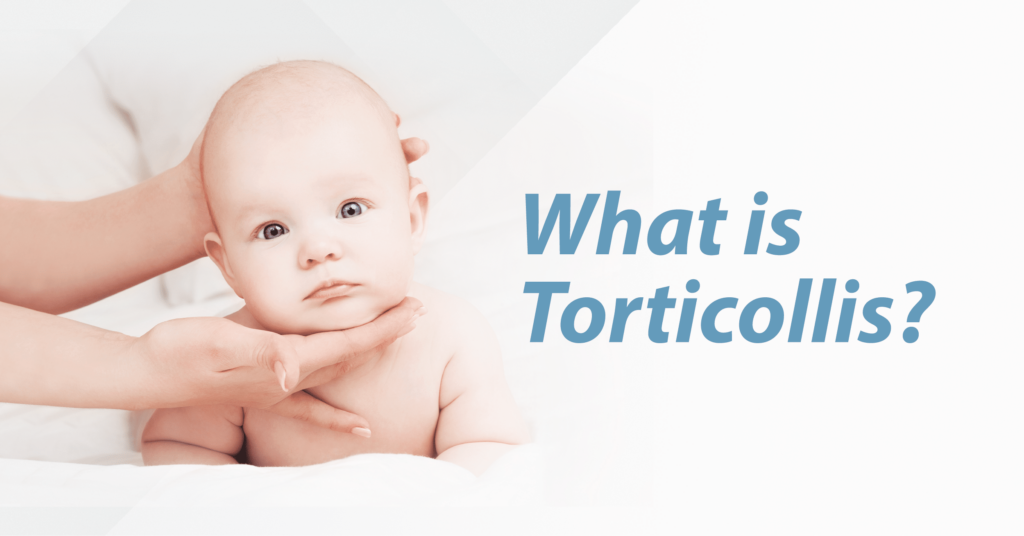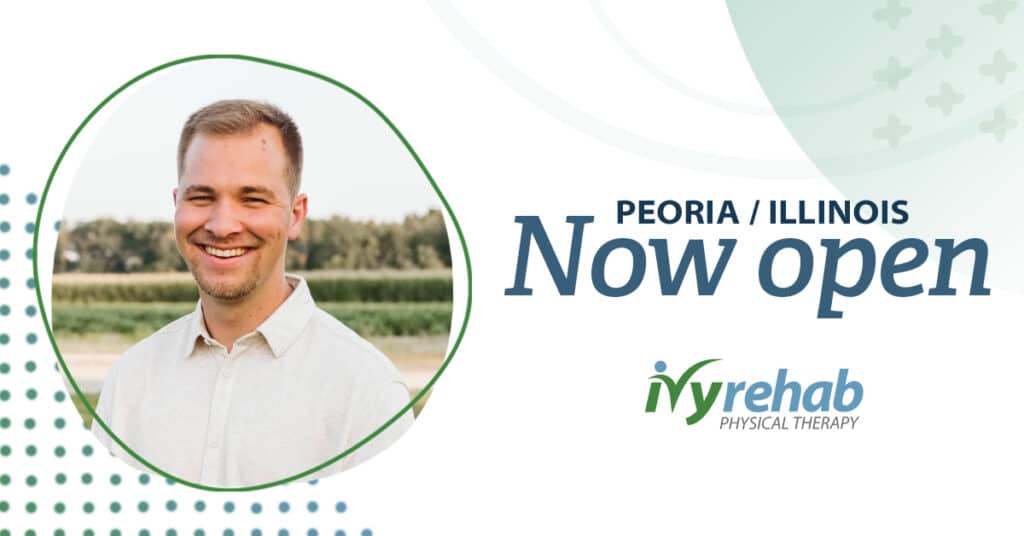Torticollis, sometimes called “wry neck,” is a condition that affects how a baby holds and moves their head. If your baby’s head tilts to one side and they have trouble turning it, they may be showing signs of congenital torticollis – a condition that affects around 1 in every 250 babies, according to the National Library of Medicine.
The good news? Addressing torticollis early occurs as a key intervention. With early support and pediatric physical therapy, torticollis is highly treatable. Let’s explore the signs, causes, and how physical therapy can help your little one move more comfortably and confidently.
What Causes Torticollis in Babies?
Most often, torticollis is congenital, meaning it’s present at birth. It usually happens when a muscle in your baby’s neck – called the sternocleidomastoid (SCM) – becomes tight or shortened. This often happens because of how a baby is positioned in the womb or the physical stress of delivery, both of which can affect neck muscle development, according to the American Physical Therapy Association.
When this muscle is tight, it causes the head to tilt toward the affected side and rotate away from it. Over time, this makes it harder for babies to move their head in both directions.
What Are the Signs and Symptoms of Torticollis?
Signs may appear as early as 2 to 4 weeks of age, especially when your baby starts gaining head control. While every child is unique, these are common signs of congenital torticollis:
- Head titled to one side, with the chin pointing to the opposite side
- Limited head or neck movement
- A small, firm lump in the neck
- Uneven shoulders or head shape
- Facial asymmetry
- Difficulty turning the head during feeding or play
In some cases, torticollis may develop later – known as acquired torticollis. Signs may include:
- Sudden head tilt
- Neck stiffness or swelling
- Head tremors
- Pain or discomfort with movement
- Headaches (in older children)
If your child is showing any of these signs, reach out to your pediatrician or a pediatric physical therapist for an evaluation.
How Does Torticollis Affect Development?
Torticollis can limit a baby’s ability to move and interact with their environment. Without support, it may lead to:
- Delayed rolling or crawling
- Favoring one side of the body
- Flattening of the head (positional plagiocephaly)
- Limited visual tracking
- Challenges with symmetrical development of head and neck movements
These delays are often temporary and respond well to early therapy and positioning strategies.
The Role of Muscles in Torticollis
In young infants, torticollis is primarily associated with the cervical neck muscles, especially the sternocleidomastoid (SCM). When this muscle tightens or shortens, it causes congenital muscular torticollis, leading to a twisted head neck position. This condition often appears at birth and may include complications such as cervical dystonia. Recognizing the muscles involved is key to determining treatment and preventing issues in infants. Early consultation with medical professionals is vital for effective diagnosis of torticollis and management.
Can Torticollis Be Treated?
Yes – and the earlier the better. Recognizing wry neck early can improve treatment outcomes. With early diagnosis, pediatric physical therapy can help improve head and neck mobility and prevent long-term issues. Babies typically begin therapy between 3 and 6 months of age, though treatment can start earlier or later depending on individual needs.
Treatment may include:
- Gentle stretching exercises
- Parent education and positioning strategies
- Guided play to improve movement and head control
- Addressing underlying muscle tightness
- Tracking developmental progress
In some cases, your provider may also monitor for or treat positional plagiocephaly with repositioning techniques or helmet therapy.
Simple Ways to Support Your Baby at Home
Here are a few ways to encourage healthy movement patterns and support your baby’s therapy:
Tummy Time
Start early and often. Tummy time helps strengthen your baby’s head, neck, and shoulder muscles and improves coordination.
Sleep Position
When placing your baby on their back to sleep (as recommended by the American Academy of Pediatrics), position their head to face the wall. Babies naturally turn toward open space, helping stretch the tight side.
Feeding Position
Switch sides regularly while feeding to avoid favoring one direction. This helps promote equal muscle use on both sides of the neck.
Playtime Tips
Use toys and mirrors to encourage your baby to turn their head in both directions. Place objects on their non-preferred side during play.
When to Seek Medical Help for Torticollis
Seeing a medical healthcare professional is crucial if your child displays torticollis symptoms, like a persistent head neck tilt or limited cervical neck movement. Early diagnosis from a pediatrician or pediatric physical therapist can initiate necessary treatments, such as stretching exercises and supervised rehabilitation. These medical interventions can enhance overall development and help avoid complications such as cervical dystonia and abnormal neck muscle growth. Seek immediate advice if symptoms persist or worsen.
Why Early Diagnosis Matters
The earlier torticollis is identfied, the easier it is to treat. Pediatricians, physical therapists, and parents all play a role in spotting early signs.
If you’re concerned about your baby’s head position, reach out. Our pediatric physical therapists specialize in gentle, effective care to support your child’s movement and development – while giving you the tools and confidence to support them at home.
Find an Ivy Rehab for Kids location near you and request an appointment today. gnosis, through pediatrician awareness and parent education, is key in the successful treatment of infants with moderate to acute torticollis. Contact an Ivy Rehab clinic near you to discuss your child’s torticollis symptoms and receive the proper treatment by a trusted pediatrician and physical therapist.





